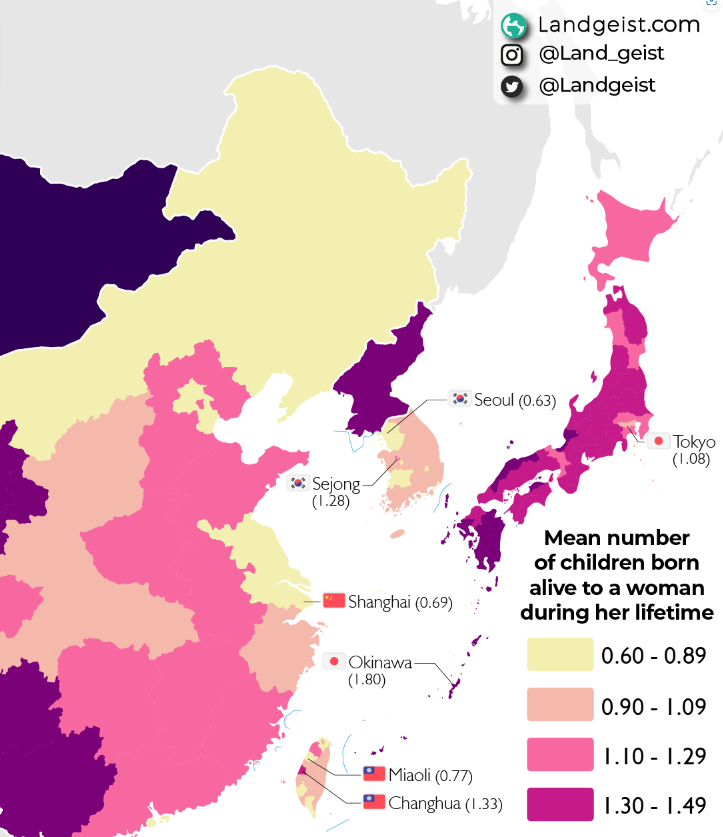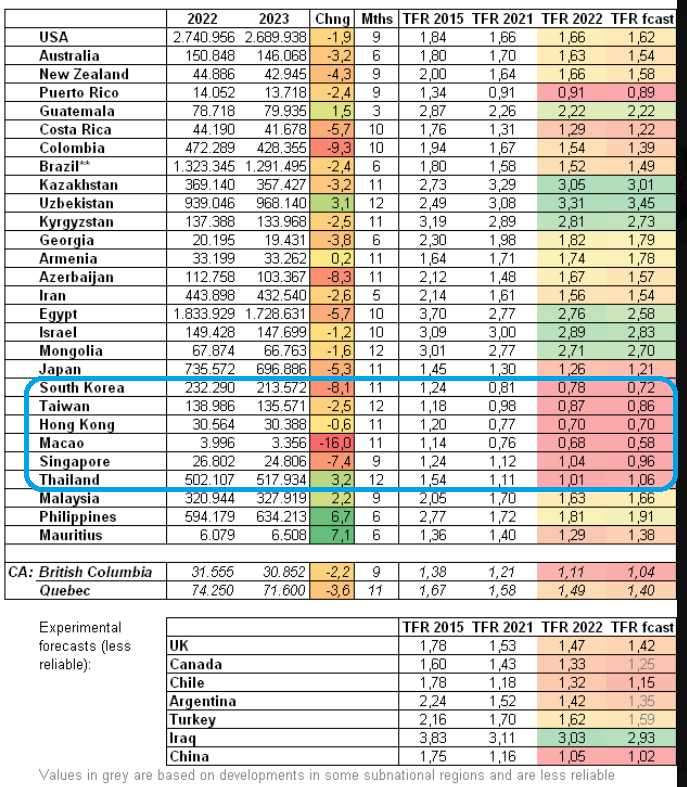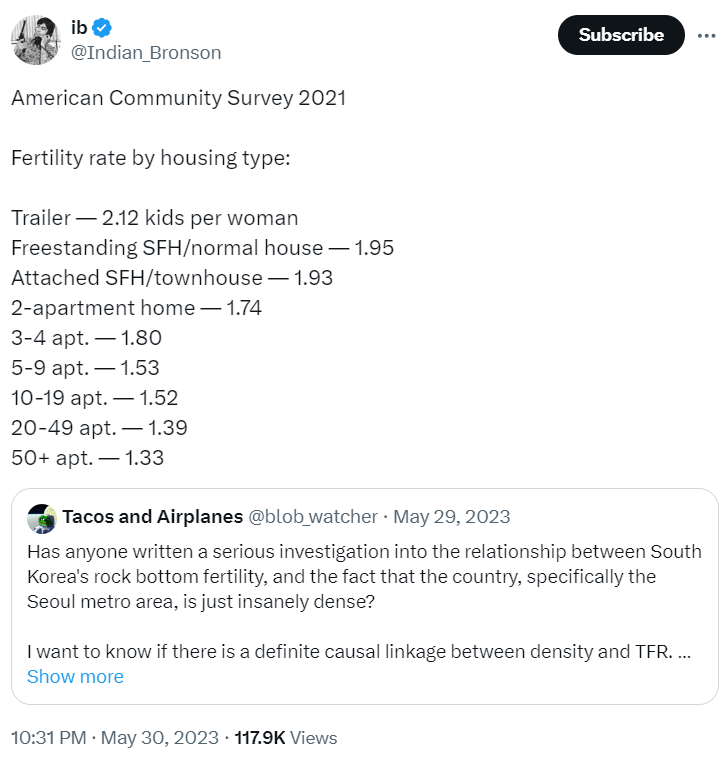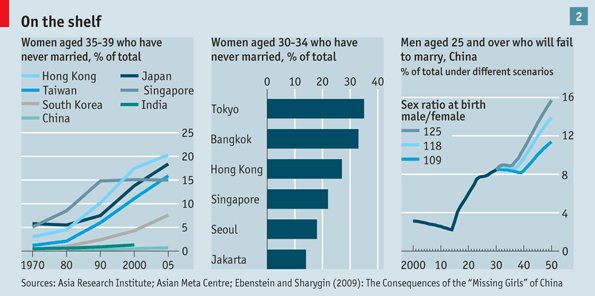South Korea has the lowest fertility rate in the world at a mere 0.7 births per woman. But 🇰🇷 is not alone. Several regions have fertility well below 1.
A look at places with ultra-low birthrates, how they got there, and some lessons for all of us.
Important 🧵, please share!



A look at places with ultra-low birthrates, how they got there, and some lessons for all of us.
Important 🧵, please share!



To begin with, let's dispense with a misconception. Although all of Europe struggles with low birth rates and aging populations, Europe is not facing 'lowest-of-low' fertility rates that are now seen in parts of Asia. (Map by @landgeist, table by @BirthGauge.) 2/14




The places with the lowest fertility rates in the world? South Korea of course, as this map by @nonebusinesshey shows. But also a bunch of regions in China. And Taiwan, Singapore and Bangkok, Thailand, all well below 1 birth per woman.
What do they all have in common? 3/14




What do they all have in common? 3/14




First, all have adopted ultra-dense housing configurations. Here is Macao, with a fertility rate that was just 0.58 births per woman in 2023. Seoul, with a TFR of just 0.54, is just as dense.
Such extreme density is not necessary. Most of Korea is sparsely populated! 4/14


Such extreme density is not necessary. Most of Korea is sparsely populated! 4/14


From the American Community Survey, we know that housing type dramatically impacts fertility rates, with tall towers having the lowest fertility of all. (HT @Indian_Bronson). 5/14 

Second, all of the ultra-low fertility places once had strong population control propaganda and programs, which have not been matched in enthusiasm by pro-family messages since.
Here are old propaganda posters from China and Korea urging small families. The messages stuck! 6/14


Here are old propaganda posters from China and Korea urging small families. The messages stuck! 6/14


Third is a culture of "workism", placing work above all else.
Korea and China wowed the world with their rapid growth, but family life has been crushed. In Korea, the govt. tried to raise the work week to 69 hours! In China, migrant workers are far from family supports. 7/14


Korea and China wowed the world with their rapid growth, but family life has been crushed. In Korea, the govt. tried to raise the work week to 69 hours! In China, migrant workers are far from family supports. 7/14


We want to think of capitalism as always good, but there is a big risk. As @philippilk writes in American Affairs, the pull of work itself can cause fertility collapse. That happened when formerly Communist countries embraced free markets, and it's happening in Asia today. 8/14








Fourth, all the ultra-low birthrate countries once relied on arranged marriage, and haven't adjusted well to its disappearance. This chart for Japan would be similar in 🇨🇳 and 🇰🇷. Meanwhile marriage rates have plunged. 9/14
(Charts by and The Economist). web-japan.org


(Charts by and The Economist). web-japan.org


How much of a difference does this make?
Likely a lot. In North Korea where arranged marriage is still the norm, 96% of adults age 30+ are married and the fertility rate in the North is more than twice as high as in the South. 10/14
Likely a lot. In North Korea where arranged marriage is still the norm, 96% of adults age 30+ are married and the fertility rate in the North is more than twice as high as in the South. 10/14

Turning the question around, what are some ways to boost fertility, for the ultra-low-fertility countries and for everyone else?
First is lower density housing that is still linked to economic hubs. 🇺🇸 and 🇦🇺 show the way, as this thread explains. 11/14
First is lower density housing that is still linked to economic hubs. 🇺🇸 and 🇦🇺 show the way, as this thread explains. 11/14
https://twitter.com/MoreBirths/status/1744831537936310394
Second is explicit pro-natal messaging. Countries including Israel, France, Hungary, Mongolia and Japan all suggest this makes a difference. But the coolest example is Georgia. As @lymanstoneky showed, Patriarch Ilia II urged couples in 🇬🇪 to have more kids, and they did! 12/14






Third is work-life balance. Europe has for decades strived to achieve this, and its fertility rates haven't fallen to the ultra-low levels of East Asia. Work from home helps. This chart by Lyman Stone reveals that those w/remote work will have more kids than those without. 13/14 

Last is bringing back arranged marriage, at least as one option. Countries that retain a culture of arranged marriage, like Israel and India, are doing much better demographically than those that lost that tradition. 14/14
(Follow @MoreBirths for more solutions to this crisis!)
(Follow @MoreBirths for more solutions to this crisis!)

• • •
Missing some Tweet in this thread? You can try to
force a refresh













































